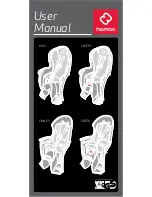
35
BRAKES
NOTICE
Risk of damage!
Depending on the intensity of use, the brake pads of the disc brake can "glaze"
over time, possibly reducing the braking effect and generating annoying noises
(squeaking). Glazing can also occur when you make an emergency stop with
new brake pads. You may also damage the disc brake components when fitting
or removing the corresponding wheel.
»
When descending longer gradients, regularly perform sudden, relatively hard
braking actions to "release" glazed brake pads. Always make sure that you can
perform the cycling or braking manoeuvre in question without risk.
»
If the disc brake and/or your bike is new or after the brake pads have been
replaced, break in the disc brake away from road traffic before using your bike
regularly. See chapter 24.7 "Breaking in disc brakes" on page 57.
»
Always contact your specialist dealer to remove or install a wheel with a disc
brake fitted to its hub.
20.3
Operating the disc brake
INFORMATION
If you actuate the front and rear brakes evenly and almost simultaneously, you can
usually control your bike better while braking and reduce your braking distance.
• Pull the brake lever towards the handlebar grip to brake the corresponding wheel.
-
Pull the brake lever harder or all the way to increase or maximise the braking force
("emergency braking").
-
Pull the brake lever less abruptly or release it to reduce the braking force or stop
braking.
















































